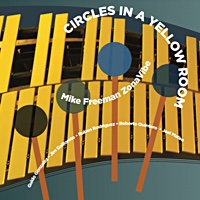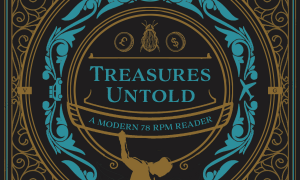1815: A Prussian composer reports a new contrivance. A local chamber musician has modified his brass concert horn, adding valves that allow him to play all the notes in the chromatic scale deftly and with total precision.
Brass instruments were exceedingly limited at the time, and the invention put the concert horn technically on par with the rest of the orchestra. Gottlob Benedikt Bierey of Breslau (now the city of Wrocaw, Poland) was bowled over.
In fact, he was so tickled, he wrote about the valves in the local newspaper: What a new realm of beautiful effects this has opened up to composers! This was the first public announcement of a valved horn.
To fully appreciate Bierey's enthusiasm, you have to understand that for a very long time, trumpets were pretty boring.
The earliest brass instruments, up until about the 15th century, were simple, straight tubes with a mouthpiece at one end and a fluted bell at the other. They were used mostly as signaling devices, or for ceremonial purposes. The brass was a civilized step up from the days when people just blew into animal horns or sea shells to get each others attention or announce somebody's arrival.
In the early 1600s, some composers started scoring secular and religious pieces for them, and their inherent musicality began to shine. But compared to stringed instruments and wind instruments, trumpets were still limited.
The early brass horn was tuned to one note (this lowest natural note is called the fundamental), which was determined by the length of its tube. By tightening his lips, a player could produce higher notes, called overtones an octave above the fundamental, then a fifth, then a fourth, and so on but the number of exact pitches that could be played maxed out at about 12 or 13.
This problem was partially solved by the addition of a slide, a section of tubing the player could move in and out to reach those missing notes in between overtones. Its the same mechanism you see (and hear) in the modern trombone. Other players developed the technique of placing their hand into the bell of a curved horn to make reaching the trickiest overtones easier.
The addition of the slide greatly improved the versatility of brass instruments, but it wasn't until the invention of the valve that brass players could hit all of the notes in the chromatic scale with absolute precision and consistency of tone.
A few rudimentary valve designs began showing up in the early 1800s, but it is Heinrich Stlzel who is credited with affixing the first documented valve to his Waldhorn (the instrument we now call the french horn) in 1814. By most accounts, Stlzel's system used two spring-loaded cylindrical piston valves. Holes were bored through the pistons to redirect air through shorter and longer tubes each offering a different array of notes when the valves were depressed.
We know to honor Stlzel with this invention, because he took the time to write King Friedrich Wilhelm III of Prussia a letter trumpeting his efforts.
My horn can play all the notes from the lowest to the highest with the same purity and strength without having to stop the hand into the bell, he wrote in December 1814. The mechanism of my invention is most simple. This device renders the many crooks superfluous and makes it possible for the artist to play all the notes without losing any of the instruments tone.
Obviously a proud man, Stlzel was showing off his invention all over Silesia. Bierey, a composer and theater director, seems to be the first to publicize the invention.
Heres Bierey's report, published in the Allgemeine musikalische Zeitung (General Musical Newspaper) on May 3, 1815:
Heinrich Stlzel, the chamber musician from Pless in Upper Silesia, in order to perfect the Waldhorn, has succeeded in attaching a simple mechanism to the instrument, thanks to which he has obtained all the notes of the chromatic scale in a range of almost three octaves, with a good, strong and pure tone.
All the artificial notes which, as is well known, were previously produced by stopping the bell with the right hand, and can now be produced merely with two levers, controlled by two fingers of the right hand are identical in sound to the natural notes and thus preserve the character of the Waldhorn. Any Waldhorn-player will, with practice, be able to play on it.
Bierey was fully aware the impact this advancement would have on the music of the time, noting it allowed horn players to perform any musical passage with a perfection not hitherto attained.
Brass instruments were exceedingly limited at the time, and the invention put the concert horn technically on par with the rest of the orchestra. Gottlob Benedikt Bierey of Breslau (now the city of Wrocaw, Poland) was bowled over.
In fact, he was so tickled, he wrote about the valves in the local newspaper: What a new realm of beautiful effects this has opened up to composers! This was the first public announcement of a valved horn.
To fully appreciate Bierey's enthusiasm, you have to understand that for a very long time, trumpets were pretty boring.
The earliest brass instruments, up until about the 15th century, were simple, straight tubes with a mouthpiece at one end and a fluted bell at the other. They were used mostly as signaling devices, or for ceremonial purposes. The brass was a civilized step up from the days when people just blew into animal horns or sea shells to get each others attention or announce somebody's arrival.
In the early 1600s, some composers started scoring secular and religious pieces for them, and their inherent musicality began to shine. But compared to stringed instruments and wind instruments, trumpets were still limited.
The early brass horn was tuned to one note (this lowest natural note is called the fundamental), which was determined by the length of its tube. By tightening his lips, a player could produce higher notes, called overtones an octave above the fundamental, then a fifth, then a fourth, and so on but the number of exact pitches that could be played maxed out at about 12 or 13.
This problem was partially solved by the addition of a slide, a section of tubing the player could move in and out to reach those missing notes in between overtones. Its the same mechanism you see (and hear) in the modern trombone. Other players developed the technique of placing their hand into the bell of a curved horn to make reaching the trickiest overtones easier.
The addition of the slide greatly improved the versatility of brass instruments, but it wasn't until the invention of the valve that brass players could hit all of the notes in the chromatic scale with absolute precision and consistency of tone.
A few rudimentary valve designs began showing up in the early 1800s, but it is Heinrich Stlzel who is credited with affixing the first documented valve to his Waldhorn (the instrument we now call the french horn) in 1814. By most accounts, Stlzel's system used two spring-loaded cylindrical piston valves. Holes were bored through the pistons to redirect air through shorter and longer tubes each offering a different array of notes when the valves were depressed.
We know to honor Stlzel with this invention, because he took the time to write King Friedrich Wilhelm III of Prussia a letter trumpeting his efforts.
My horn can play all the notes from the lowest to the highest with the same purity and strength without having to stop the hand into the bell, he wrote in December 1814. The mechanism of my invention is most simple. This device renders the many crooks superfluous and makes it possible for the artist to play all the notes without losing any of the instruments tone.
Obviously a proud man, Stlzel was showing off his invention all over Silesia. Bierey, a composer and theater director, seems to be the first to publicize the invention.
Heres Bierey's report, published in the Allgemeine musikalische Zeitung (General Musical Newspaper) on May 3, 1815:
Heinrich Stlzel, the chamber musician from Pless in Upper Silesia, in order to perfect the Waldhorn, has succeeded in attaching a simple mechanism to the instrument, thanks to which he has obtained all the notes of the chromatic scale in a range of almost three octaves, with a good, strong and pure tone.
All the artificial notes which, as is well known, were previously produced by stopping the bell with the right hand, and can now be produced merely with two levers, controlled by two fingers of the right hand are identical in sound to the natural notes and thus preserve the character of the Waldhorn. Any Waldhorn-player will, with practice, be able to play on it.
Bierey was fully aware the impact this advancement would have on the music of the time, noting it allowed horn players to perform any musical passage with a perfection not hitherto attained.
For more information contact All About Jazz.


































